
We find, depending on the region, three kinds of drinks from the Amazon (other than water): non-alcoholic , alcoholic , the so-called aphrodisiac and psychoactive.
Some of them are left to ferment, and are converted from non-alcoholic beverages to alcoholic beverages, due to ethyl fermentation. This is the case of masato , chicha or cane huarapo.
Beverages in the Amazon context
In the Amazon basin , a little more than thirty million people live together in two basic contexts that, in a simplified way, we can call rural and urban.
Each one with its peculiarities in terms of its forms of culture and economy .
Their social behaviors differ, as well as their ways of entertaining themselves.
Both use, however, non-alcoholic beverages to cool off, and alcoholic beverages to get drunk.
Popular drinks in an Amazonian market
When we visit a popular market for the first time, as happens in the main Amazonian cities of each country: Manaus, Brazil , or in Iquitos, Peru , or in Letitia , Colombia , or in Tena, Ecuador , or in Puerto Ayacucho, Venezuela , we are amazed to witness the sale of a huge amount of wild fruits , which we had never seen, and we call them “exotic”.
Non-Alcoholic Beverages from the Amazon
Non-alcoholic beverages are numerous, among them we find:
Natural fruit juices:
Like the following: cashú or cashew, camu camu, cocona, soursop, guava, lemon, lucuma, melon, watermelon, pineapple, papaya, taperibá, etc.
Masatos (not fermented)
Drinks prepared with palm tree drupes and those made with cassava , such as: cassava, banana, sweet potato or pandisho masato.
October 19, 2019

▷ Masato: the essential Amazonian drink
banana-based drinks
Like the chapo, the upe, the shibé, the pururuca or the plataniza;
palm tree drupes
Drinks are also made with cooked palm drupes, such as aguajina, ungurahuina, pijuayina, huasaí or coconut water.
Guarapos
Like the huarapo or guarapo made from sugar cane.
These are refreshing drinks, taken fresh, without letting them ferment.
Trade of Amazonian fruits in the cities.
The wide variety of fruit juices, many of them unknown outside the region, are not used to drinking in the jungle , and they are only found in the stores located in the main Amazonian population centers, and in particular, in the picturesque public markets that operate in Amazonian cities such as Manaus, Belem do Pará, Tabatinga, Iquitos, Moyobamba, Tarapoto, Leticia, Puyo , Tena, Puerto Ayacucho.
In some cities, such as Iquitos , street vendors sell aguaje drupes, aguajina, and aguaje ice cream on the street.
In Amazonian cities there is also a growing consumption of soft drinks or carbonated beverages.
Alcoholic or fermented beverages from the Amazon
Among the members of the native Amazonian indigenous communities, the most popular drink, in all the countries of the basin , is masato or chicha, generally made from sweet yucca. They call it the beer of the Amazon.
Alcoholic beverages are many and popular, and are consumed by both the inhabitants of the native indigenous communities and the Amazonian population centers, although the reasons and the drinks consumed are different.
Masato : beer from the Amazon
Among the fermented ones we find the masato or chicha , which is made with yucca, or banana, or palm drupes, which are the preferred drinks by the Amazonian indigenous people.

Among the members of the native Amazonian indigenous communities, the most popular drink, in all the countries of the basin, is masato or chicha, generally made from sweet cassava, although they also make it from other raw materials.
They call masato the beer of the Amazon.
distilled beverages
Distilled beverages include cane brandy, cachaça, the popular Brazilian brandy distilled from sugar cane juice.
The most popular drinks among mestizos and settlers are beer, aguardiente or cachaça, and alcoholic beverages derived from the maceration of certain barks or roots in cane liquor.
“Aphrodisiac” drinks
Many of them have colorful names, such as beehive, chuchuhuasi, canelazo, huitochado, orange or viborachado, or names with double meanings, such as romper calzón, achuni ullo, get up Lázaro, seven times without taking out, in clear allusion to their alleged aphrodisiac powers.
In the populated centers of the basin, the most popular alcoholic beverage, in this case distilled, is cane liquor or cachaça.
Psycho-active drinks
Among the psychoactive drinks, which contain alkaloids, such as caffeine and other alkaloids, which cause certain effects on the normal functioning of the central nervous system, we find the infusion of guayusa , and the drink of ayahuasca , stronger than the first, and that is ingested in magical-religious contexts, ritual ceremonies or physical or spiritual healing.
The infusion of guayusa, or simply guayusa, is the daily and ritual drink of some native communities of the Ecuadorian Amazon , such as the Achuar or Jíbaro.
Outside that region, guayusa is little known and consumed.

Dr. Rafael Cartay is a Venezuelan economist, historian, and writer best known for his extensive work in gastronomy, and has received the National Nutrition Award, Gourmand World Cookbook Award, Best Kitchen Dictionary, and The Great Gold Fork. He began his research on the Amazon in 2014 and lived in Iquitos during 2015, where he wrote The Peruvian Amazon Table (2016), the Dictionary of Food and Cuisine of the Amazon Basin (2020), and the online portal delAmazonas.com, of which he is co-founder and main writer. Books by Rafael Cartay can be found on Amazon.com
Related Posts
December 14, 2019

Amazonian myths and legends about ayahuasca
November 28, 2019
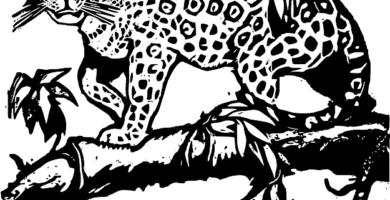
Amazonian Indigenous People Cosmovision – Beliefs, Taboos, Myths and Legends
November 27, 2019
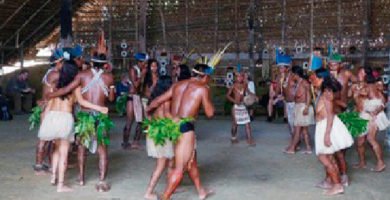
13 Typical dances of the Amazon (videos, music and movements)
November 25, 2019
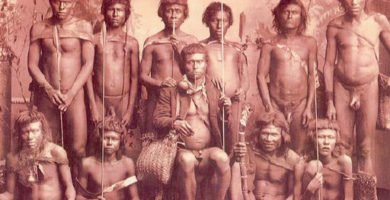
Amazonian Languages
November 5, 2019
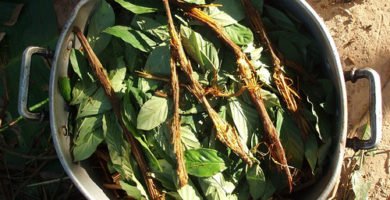
Ayahuasca – Rites, myths and truths behind Yagé and Chacruna
October 19, 2019
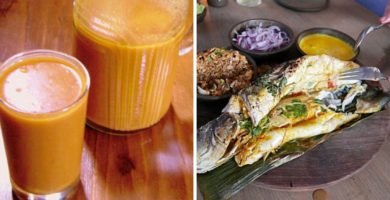
Amazon Cuisine – The Rainforest Food – Dishes and Drinks
October 5, 2019
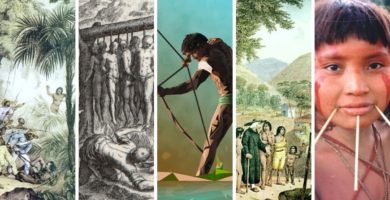
All the Indigenous Peoples of the Amazon Rainforest
October 5, 2019

Myths of the Amazon Rainforest
October 5, 2019

Amazonian dishes – Traditional Rainforest Food
This post is also available in:
![]() Español (Spanish)
Español (Spanish)
